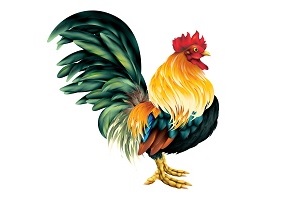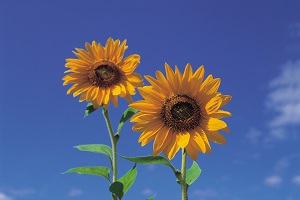There are a lot of symbols that represent joy and celebrations in Chinese culture such as the magpie and pu dai.
But not are as intuitive and all-encompassing as the double happiness symbol.
This is a symbol that basically consist of the word xi (喜) which means happiness, written twice side-by-side with two of it’s stroke joined together.
The meaning of this symbol is essentially double the joy and happiness (双喜). And is often used as decorative items in festivities or events worthy of celebration.

Those are eagle-eyed might have noticed the presence of word propitious on top of the symbol. The two squares at the bottom is also said to resemble wide smiling mouths.
It originally started as wedding decor for blessing newly weds with a happy marriage.
And it slowly made it’s way to all types of Chinese festivities when happiness is wished upon the people who these events are held for.
Legend of the double happiness symbol
The origins of this adored symbol can be traced to a mythical story about a government official named wang anshi (王安石).
One day when he was on his way to sit for an examination, he came across a couplet that was incomplete. Upon asking about it, he found that it was written by a beautiful lady who promised to marry the person who would be able to complete the other half of the couplet. As time was not in his favor, Wang had to rush off for the scheduled exams. With a stroke of fate, he came across a test question that resembled the word puzzle presented by the lady. This time, in his exam mode, he solved the puzzle. After the exam, he went back to the lady and presented his answer. His half of the couplet matched with that of the lady, and she kept her promise. On wedding day, Wang received the good news that he came in first in the exams. This was a pretty big deal. He then wrote the double happiness symbol in calligraphy on auspicious red paper and paste it on the front door. This is meant to represent a doubly joyous event of the wedding and academic success.
This practice then slowly became widespread as Wang became more famous. And the symbol can be seen these days in celebration of events and festivals.
The practice is still widespread in modern Chinese weddings and the symbol can be used for all types of motifs and decorative items such as paper cutouts, lanterns, designs on furniture, embroidered on clothing, etc.
However in weddings these days, the double happiness is more associated with the joy of the wedding and the anticipated joy of having children soon.
Those wishing for marriage luck are also known to carry the double happiness symbol with them in the form of jewelry, motifs, and clothing embroideries.
They can also often be found written in Chinese calligraphy paintings as it’s has strong connotations with auspicious events.















